Paul E. Fallon's Blog, page 83
September 4, 2014
Auxiliary Verbs
 A husky Cambodian pulls his moto across traffic along Battambang Cambodia’s riverside promenade. “Excuse me, do you speak English?” It’s a ridiculous question to ask a tall American and his blond daughter. The man continues before we bother to answer. “I am a teacher and have a grammar question for you.” We step back, seeking escape, but the guy talks fast. “Can you tell me how many auxiliary verbs are contained in the English language?”
A husky Cambodian pulls his moto across traffic along Battambang Cambodia’s riverside promenade. “Excuse me, do you speak English?” It’s a ridiculous question to ask a tall American and his blond daughter. The man continues before we bother to answer. “I am a teacher and have a grammar question for you.” We step back, seeking escape, but the guy talks fast. “Can you tell me how many auxiliary verbs are contained in the English language?”
His question halts my retreat. I try to remember what auxiliary verbs are, but I cannot. I look to Abby; she shrugs. “Does he mean irregular verbs?”
The moto guy props his foot on the curb and peers up from under his thick hair. “No, auxiliary verbs, as in ‘Do you want to go to the store?”
Abby and I consider options on our fingers. “Could, should would? How, what, where, why?” Clearly, we have no idea.
“Do you have an email address, I’ll see if I can find out for you?” I’m putty in Mr. Moto’s hands, but also curious to refresh my grammar. The guy pulls a brochure from his satchel, The Slarkram English School, and formally introduces himself – Mr. Bunnarath Som – in rapid, florid English. His brochure includes web links, photos, and that oddly constructed English peculiar to Asia. Having visited the school, and if you like what we are trying to do, you may feel inclined to make a small donation to further our work there. Such convoluted sentences would annoy me back home; here they simply enhance the foreign wonder of our afternoon stroll.
Mr. Som pulls out a binder with color photos of him teaching students the world’s power language, distributing certificates, building houses for local farmers, and buying sewing machines for needy widows. His salesmanship drives the hard side of my brain to figure he’s a con artist. I pocket the brochure and we wave goodbye.
The following morning, on the other side of the river, Abby and I walk to breakfast. A guy pulls up on his moto and asks if we speak English. Oops, same guy pestering same tourists. This second encounter strengthens my doubts. I check him out online. If Internet presence confers legitimacy, Mr. Som is everything he claims.
 Since we are leaving town we cannot visit his school. Still, I make good on my promise and email him that, according to Reference.com, English has 23 auxiliary verbs: is, are, was, were, am, be, been, will, shall, have, has, had, would, could, should, do, does, did, can, may, might, must and seem.
Since we are leaving town we cannot visit his school. Still, I make good on my promise and email him that, according to Reference.com, English has 23 auxiliary verbs: is, are, was, were, am, be, been, will, shall, have, has, had, would, could, should, do, does, did, can, may, might, must and seem.
I leave Battambang with a firmer grasp of English grammar and a healthy awe for this man’s clever way of soliciting aid for his efforts. I also find myself using more auxiliary verbs. They induce a lyric cadence to my mother language even as they obfuscate meaning. I am not sure that Mr. Som does teach exactly as he claims, but if he would operate the school as he seems to profess, his students should learn his strategy could help everyone. That awkward sentence contains six auxiliary verbs. It also has that ring of an Asian translation I’ve come to fancy.


September 2, 2014
The Music in Our Midst
 Kiyoe Wellington has big hands, calloused fingers, and strong forearms. It takes power to draw music from a double bass. She also has a hoop nose ring and spiky dreadlocks; unruly as the loose horsehair she yanks out of her giant bow. This twenty-one-year-old New England Conservatory student from Hawaii has travelled five time zones to spend Sunday afternoons practicing along Jordan Hall’s gallery of rehearsal rooms; a cacophony of sopranos, violas, clarinets, and basses. Her journey was years in the making. Kiyoe started playing bass at age six, won an international competition at 14 and played Carnegie Hall in high school before coming to Boston to study with Todd Seeber, Boston Symphony Orchestra’s renowned bass.
Kiyoe Wellington has big hands, calloused fingers, and strong forearms. It takes power to draw music from a double bass. She also has a hoop nose ring and spiky dreadlocks; unruly as the loose horsehair she yanks out of her giant bow. This twenty-one-year-old New England Conservatory student from Hawaii has travelled five time zones to spend Sunday afternoons practicing along Jordan Hall’s gallery of rehearsal rooms; a cacophony of sopranos, violas, clarinets, and basses. Her journey was years in the making. Kiyoe started playing bass at age six, won an international competition at 14 and played Carnegie Hall in high school before coming to Boston to study with Todd Seeber, Boston Symphony Orchestra’s renowned bass.
 Kiyoe is among the more than 5,000 students who attend three neighboring music schools within one square mile, the densest concentration of music students in the world. The New England Conservatory, The Boston Conservatory, and Berklee College of Music coexist in an area roughly bordered by Massachusetts Avenue and The Fenway, Boylston Street and the Orange Line. According to official City of Boston neighborhood designations, this rectangle falls within the Fenway neighborhood, but many people refer to area as Symphony. It’s not uncommon to hear strains of Brahms on Gainsborough Street, Bernstein along Hemenway, and Brubeck on Haviland, with unexpected fusions at the intersections. How this small precinct became a Mecca for music students is a tale of nineteenth century history and twentieth century moxie. How each school will adapt a pedagogical tradition of individual instruction to a world of massive online open courses will influence how the neighborhood evolves in the twenty-first century.
Kiyoe is among the more than 5,000 students who attend three neighboring music schools within one square mile, the densest concentration of music students in the world. The New England Conservatory, The Boston Conservatory, and Berklee College of Music coexist in an area roughly bordered by Massachusetts Avenue and The Fenway, Boylston Street and the Orange Line. According to official City of Boston neighborhood designations, this rectangle falls within the Fenway neighborhood, but many people refer to area as Symphony. It’s not uncommon to hear strains of Brahms on Gainsborough Street, Bernstein along Hemenway, and Brubeck on Haviland, with unexpected fusions at the intersections. How this small precinct became a Mecca for music students is a tale of nineteenth century history and twentieth century moxie. How each school will adapt a pedagogical tradition of individual instruction to a world of massive online open courses will influence how the neighborhood evolves in the twenty-first century.
Each school has a different reputation: New England Conservatory is for classical musicians, The Boston Conservatory is for performers, and Berklee is for jazz. Like all generalizations, there’s fact behind these conceptions; like all generalizations, the descriptions are incomplete.
The New England Conservatory is the oldest independent school of music in the United States. Classes began in 1867 at the Boston Music Hall, site of the current Orpheum Theater near Tremont Street. When Henry Higginson created the Boston Symphony Orchestra in 1881, all nineteen BSO section leaders were conservatory faculty. That strong connection continues – half of today’s BSO members are faculty or alumni of New England Conservatory.

After the Civil War, Boston’s population expanded, along with its civic pride. Frederick Law Olmstead’s Emerald Necklace channeled the muddy flats into a discrete stream, lined the banks with parks, and created dry land for a new neighborhood. The Fenway became the preferred destination for Boston’s growing cultural institutions. The Christian Science Church, the Museum of Fine Arts, the YMCA, even the Red Sox, built in the new neighborhood.
I n 1900 the Boston Symphony Orchestra claimed the corner of Mass Ave and Huntington with its new Symphony Hall. Two years later, New England Conservatory moved to Jordan Hall, a block away. These landmark venues affirmed Boston’s commitment to serious music.
n 1900 the Boston Symphony Orchestra claimed the corner of Mass Ave and Huntington with its new Symphony Hall. Two years later, New England Conservatory moved to Jordan Hall, a block away. These landmark venues affirmed Boston’s commitment to serious music.
The Boston Conservatory of Music dates back nearly as far as New England Conservatory, though it was less encumbered by tradition from the start. In 1873, founder Julius Eichberg’s operetta, The Doctor of Alcontara, was preformed by America’s first African-American opera company. The school moved from downtown to the Fenway in 1928 and purchased additional buildings along The Fenway through the 1960s. (For those perplexed by Boston’s quaint confusions, The Fenway, capital ‘T’, is a picturesque street that winds through the Fenway, small ‘t’, neighborhood.) By 1982 The Boston Conservatory dropped the term ‘music’ from its name, since the school also taught dance and drama.
Although The Boston Conservatory continues to teach every classical instrument, it has become better known for training in popular mediums, particularly musical theater. While it doesn’t share New England Conservatory’s consistent place on top ten lists of music schools, The Boston Conservatory is famous for landing performers on stage – more than a dozen graduates from 2011 joined Broadway shows or national touring companies. Everyone below the rank of Associate Professor calls The Boston Conservatory BoCo, which adds Big Apple bling to the campus’ funky townhouse dorms and classrooms and their back alley shortcuts to their main theater on Hemenway Street. BoCo is not a campus of pastoral lawns that nurture reverie, it’s a hard-edged sliver of the city for students serious about ‘making it.’
Although the New England Conservatory and BoCo have developed different emphases over 140 years, each provides an elite environment for about 800 students immersed in music. Each scours the world seeking outstanding musical ability, while procuring balanced ensembles. An orchestra needs harps and bassoons as well as oboes and violins.
 When Lawrence Berk, an MIT-trained engineer as well as pianist, composer, arranger, CBS/NBC radio technician, and devotee of the Russian composer Joseph Schillinger’s mathematical system of musical composition, found Schillinger House along the industrial tail of Newbury Street in 1945, no one could have predicted the phenomenon that is now Berklee College of Music. Berklee was the first U.S. college to teach the popular music of its day and its success mirrors the trajectory of Post World War II American popular culture – casual, cocky, and irreverent. In the 1960s Berklee recognized guitar as a primary instrument; in the 1970s Duke Ellington nabbed the school’s first honorary degree; in the 80s Berklee offered a degree in music synthesis; in the 1990s hip-hop entered the curriculum; and after 2000, Berklee students could study mandolin, banjo, or music scoring for video games. However, not every Berklee student is a headliner; today’s most popular major is music business and management.
When Lawrence Berk, an MIT-trained engineer as well as pianist, composer, arranger, CBS/NBC radio technician, and devotee of the Russian composer Joseph Schillinger’s mathematical system of musical composition, found Schillinger House along the industrial tail of Newbury Street in 1945, no one could have predicted the phenomenon that is now Berklee College of Music. Berklee was the first U.S. college to teach the popular music of its day and its success mirrors the trajectory of Post World War II American popular culture – casual, cocky, and irreverent. In the 1960s Berklee recognized guitar as a primary instrument; in the 1970s Duke Ellington nabbed the school’s first honorary degree; in the 80s Berklee offered a degree in music synthesis; in the 1990s hip-hop entered the curriculum; and after 2000, Berklee students could study mandolin, banjo, or music scoring for video games. However, not every Berklee student is a headliner; today’s most popular major is music business and management.
The campus has expanded along Mass Ave and gobbled up buildings throughout the Fenway. In 1994 the Berklee Center in Los Angeles opened to foster relationships in the music industry, while in 2011 Berklee opened its first satellite campus in Valencia, Spain.
 In just over fifty years Berklee has become the largest music school in the world. With over 4,000 students in Boston, Berklee’s now five times bigger than either of its elder neighbors. But it teaches five times more students – over 20,000 – online. Berklee is leading the exploration of how music education meets the digital age, offering online courses, certificates, and degrees.
In just over fifty years Berklee has become the largest music school in the world. With over 4,000 students in Boston, Berklee’s now five times bigger than either of its elder neighbors. But it teaches five times more students – over 20,000 – online. Berklee is leading the exploration of how music education meets the digital age, offering online courses, certificates, and degrees.
From its conception, Berklee turned the traditional approach to higher music education on its head. While the conservatories accepted a small number of students with proven talent, Berklee adopted easier admission criteria. In the early years, when up to 80% of Berklee’s applicants were accepted, but 80% of entering freshmen failed to graduate, Berklee reflected our country’s post World War II shift away from college as an elite experience of intense study to one of individual growth and exploration available to many.
Today, Berklee looks more like a traditional college than it did fifty years ago. It offers sequenced curricula, well-appointed dormitories, and student activity options that rival any college experience. The school enjoys increasing graduation rates, and has become more difficult to attend – only 35% of applicants are accepted. Berklee navigates a precarious juggling act as a respected institution that maintains a counterculture vibe. It’s still famous for its dropouts, such as South Korean rapper PSY and jazz pianist Keith Jarrett. Michael Wartofsky, Professor of Harmony, acknowledges, “the myth that you don’t have to graduate from Berklee, you just have to go for a semester or two and then drop out to become a rock star, may persist for another century.” Berklee would like to put that myth to rest sooner, and highlight its many exceptional graduates, among them Quincy Jones, Melissa Etheridge and Branston Marsalis. In this decade, each school is transforming its campus to update aging facilities, accommodate growth, and provide enhanced practice, recording, and performance space. Two years ago BoCo renewed Hemenway Street’s vitality with its renovated and expanded theater. This fall they will open a new studio building on Ipswich Street, overlooking the Mass Pike. New England Conservatory has announced plans to build a major dormitory and studio arts building that will link their current facilities along Saint Botolph Street.
In this decade, each school is transforming its campus to update aging facilities, accommodate growth, and provide enhanced practice, recording, and performance space. Two years ago BoCo renewed Hemenway Street’s vitality with its renovated and expanded theater. This fall they will open a new studio building on Ipswich Street, overlooking the Mass Pike. New England Conservatory has announced plans to build a major dormitory and studio arts building that will link their current facilities along Saint Botolph Street.
 Meanwhile, Berklee’s recently completed student commons and dormitory is an eye-popping addition to Mass Ave. As the first new building the college has built in Boston, the 16-story tower proclaims Berklee’s ascendance as a major institution.
Meanwhile, Berklee’s recently completed student commons and dormitory is an eye-popping addition to Mass Ave. As the first new building the college has built in Boston, the 16-story tower proclaims Berklee’s ascendance as a major institution.
For prospective students, there are real differences among these three schools. Many conservatory students establish connections with specific teachers well before college. Kiyoe Wellington met Todd Seeber at a summer music camp in Hawaii. Similarly, New England Conservatory pianist Xiaopei Xu met piano faculty member Hung-Kuan Chen at music camp in Pennsylvania, while Goran Daskalov, a BoCo saxophonist from Macedonia, also met his mentor, Kenneth Radnofsky, during high school.
 New England Conservatory reaches promising secondary school students through NEC Prep. Every Saturday throughout the school year 1,400 high school students descend on Jordan Hall for private lessons, group instruction, and youth performances. NEC Prep provides a formal mechanism for high school students to discover the conservatory, while simultaneously giving faculty a close look at fresh talent. Gerald Kearny, viola; and Amit Rogel, trombone; two Brookline high school students who attend, experience a full day of music beginning with morning lessons, theory, and chamber music followed by afternoon band and orchestra. They both plan to apply to New England Conservatory for college, though Gerald is hedging his bets. “My private lesson teacher is Rictor Noren, on the faculty of BoCo. I’d be happy at either.”
New England Conservatory reaches promising secondary school students through NEC Prep. Every Saturday throughout the school year 1,400 high school students descend on Jordan Hall for private lessons, group instruction, and youth performances. NEC Prep provides a formal mechanism for high school students to discover the conservatory, while simultaneously giving faculty a close look at fresh talent. Gerald Kearny, viola; and Amit Rogel, trombone; two Brookline high school students who attend, experience a full day of music beginning with morning lessons, theory, and chamber music followed by afternoon band and orchestra. They both plan to apply to New England Conservatory for college, though Gerald is hedging his bets. “My private lesson teacher is Rictor Noren, on the faculty of BoCo. I’d be happy at either.”
Berklee also woos prospective students, in its characteristically freewheeling way. Berklee offers one-day to twelve-week summer workshops for kids as young as twelve. A typical offering promises three days getting “bass lines to groove” with Victor Wooten – no previous experience necessary.
Once accepted and living in Boston, students from the three schools interact through formal channels, informal connections, and geographic proximity.
 Berklee and BoCo intersect the most. Each is a member of the Pro Arts Consortium, six Boston-based art schools (Berklee, The Boston Architectural Center, The Boston Conservatory, Emerson, Mass College of Art & Design, and The Museum School) that allows students to cross-register for some classes. Berklee’s and BoCo’s campuses are indistinguishable; along one stretch of The Fenway brownstones alternately belong to BoCo, Berklee, then BoCo again. BoCo dormitory residents take their meals in Berklee’s dining hall, and can perform on Berklee’s Commons Caf stage. Berklee students take movement courses at BoCo, while Berklee musicians often fill out the band for BoCo productions that require rock or jazz musicians.
Berklee and BoCo intersect the most. Each is a member of the Pro Arts Consortium, six Boston-based art schools (Berklee, The Boston Architectural Center, The Boston Conservatory, Emerson, Mass College of Art & Design, and The Museum School) that allows students to cross-register for some classes. Berklee’s and BoCo’s campuses are indistinguishable; along one stretch of The Fenway brownstones alternately belong to BoCo, Berklee, then BoCo again. BoCo dormitory residents take their meals in Berklee’s dining hall, and can perform on Berklee’s Commons Caf stage. Berklee students take movement courses at BoCo, while Berklee musicians often fill out the band for BoCo productions that require rock or jazz musicians.
The New England Conservatory’s links to its sister schools are weaker. NEC is not a member of Pro Arts, though it plans to join in 2015, and its campus is a contiguous group of buildings a few blocks away from the other two. Still, musical connections bind. Classical music students at NEC are familiar with their BoCo counterparts, while students in New England Conservatory’s renowned jazz program attend performances of their Berklee peers, and vice-versa.
Informally, Students from all three institutions often socialize together, sometimes perform together, and occasionally even live together. Relationships are primarily collaborative, until they’re not. Kiyoe Wellington notes, “I haven’t seen too much competition, except maybe when it comes to auditions.”
Faculty and administration of New England Conservatory, BoCo and Berklee also view the three schools as distinct places. Richard Ortner, President of The Boston Conservatory, contrasts the two conservatories with their neighbor. “The principle difference is that at Berklee the education can be very broad and not very deep, while at either of the conservatories, the education is vary narrow but very deep. The kids are of very different kind, and indeed, the faculties are very different from one another. The Berklee faculty, who come from careers as jazz or pop musicians, have been living one kind of life. The Boston Symphony members who comprise much of the faculty at New England Conservatory and The Boston Conservatory, on the other hand, live in a very rarified and very different world.”
 Mr. Ortner is keenly aware of the new kid on the block. “With 4,000 students [Berklee] can try a lot of things; it’s a very rich faculty culture, with a lot of faculty development money, more than there is at either The Boston Conservatory or New England Conservatory.” But he sees advantages for everyone in their proximity and the collaboration it offers, whether it be operational, like dovetailing meal service, or artistic, like BoCo teaching dance and movement to Berklee students. Mr. Ortner envisions these affiliations evolving into a musical education model that mirrors how Partners Health links Boston-area hospitals. Each school will maintain its own identity and core curricula; yet share elements that can provide a richer, and more cost effective, experience.
Mr. Ortner is keenly aware of the new kid on the block. “With 4,000 students [Berklee] can try a lot of things; it’s a very rich faculty culture, with a lot of faculty development money, more than there is at either The Boston Conservatory or New England Conservatory.” But he sees advantages for everyone in their proximity and the collaboration it offers, whether it be operational, like dovetailing meal service, or artistic, like BoCo teaching dance and movement to Berklee students. Mr. Ortner envisions these affiliations evolving into a musical education model that mirrors how Partners Health links Boston-area hospitals. Each school will maintain its own identity and core curricula; yet share elements that can provide a richer, and more cost effective, experience.
One significant way the conservatories set themselves apart from Berklee reveals itself upon graduation. Since Berklee still suffers from the myth that just a stint may be school enough for stardom, a Bachelor’s from Berklee is usually a terminal degree. This may change, as Berklee recently started a graduate program and more of its alumni will pursue further study. Meanwhile each conservatory has strong, longstanding graduate programs and many of their students seek advanced degrees.
All three schools find greater competition beyond the Fenway. New England Conservatory competes with the most elite institutions: Julliard, Peabody, Yale; while BoCo competes with performance-based schools like Carnegie-Mellon, NYU, and Point Park. Increasingly, BoCo faces competition from state schools, including UMass, where a student can obtain a solid education for a fraction of the cost and, if their interest sustains, attend The Boston Conservatory for graduate school.
 Berklee’s singular position among music schools is acknowledged — even envied — by its peers. Richard Ortner waxes like a publicist when he says, “For the last twenty years at least, I can’t think of a single Grammy award that was given where one of the people up on stage wasn’t a Berklee grad. They are the producers. They are all of the people who know how to mix and use the equipment; they are ‘in’ the music industry.” Berklee’s competition isn’t other schools; it’s the rock’n’roll spirit to forego school altogether.
Berklee’s singular position among music schools is acknowledged — even envied — by its peers. Richard Ortner waxes like a publicist when he says, “For the last twenty years at least, I can’t think of a single Grammy award that was given where one of the people up on stage wasn’t a Berklee grad. They are the producers. They are all of the people who know how to mix and use the equipment; they are ‘in’ the music industry.” Berklee’s competition isn’t other schools; it’s the rock’n’roll spirit to forego school altogether.
 Conservatory students need face time, practice time, and connections to land in orchestras and musicals, while electronic composers can do it all with a laptop. Online education will be part of music education’s future, but it cannot replicate the satisfaction of jamming with your peers or the excitement of discovering music beyond your computer’s bookmarks. Just as the Internet has not obliterated urban life; online learning won’t eliminate college campuses. According to Mr. Ortner, “YouTube is the lingua franca of all of these young people and everything that they do gets up there. It doesn’t matter whether it was produced in their dorm room or on the stage of Symphony Hall, if it’s good, that’s all they care about. But this ten square block area is the bull’s-eye for college-bound students in the United States. You want to be in Boston and you want to be in the thick of it.”
Conservatory students need face time, practice time, and connections to land in orchestras and musicals, while electronic composers can do it all with a laptop. Online education will be part of music education’s future, but it cannot replicate the satisfaction of jamming with your peers or the excitement of discovering music beyond your computer’s bookmarks. Just as the Internet has not obliterated urban life; online learning won’t eliminate college campuses. According to Mr. Ortner, “YouTube is the lingua franca of all of these young people and everything that they do gets up there. It doesn’t matter whether it was produced in their dorm room or on the stage of Symphony Hall, if it’s good, that’s all they care about. But this ten square block area is the bull’s-eye for college-bound students in the United States. You want to be in Boston and you want to be in the thick of it.”
This is good news for Bostonians, who have hundreds of opportunities to enjoy these students’ incredible talent every year. This fall’s calendar at NEC, BoCo, and Berklee include dozens of performances, many free. Kiyoe Wellington and her peers know that quality music can be riffed and shared from a Macbook Air, but they choose to study music in Boston because there are still so many other facets to making music. A Boston Symphony Orchestra audition only comes from years of face time.

August 28, 2014
Games of August V: Geography
 When researching my master’s thesis, Architecture that Affords Play, back in 1980, I learned that children and adults play for different reasons. Actually, they play for diametrically opposed reasons. Children play in order to gain mastery. Adults play to reinforce what we have already mastered. Therefore, it comes as not surprise that when I decided to end the Games of August series by exploring a new an online game through the search, “Top Internet Games” I bypassed all the games that required shooting, dexterity, or speed; attributes at which I never excelled and that continue to decline as middle-age deepens. Instead I selected a geography game. It was labeled as one of the 13 hardest games on the Internet, but that reflects our society’s ignorance of geography more than the actual difficulty of the game.
When researching my master’s thesis, Architecture that Affords Play, back in 1980, I learned that children and adults play for different reasons. Actually, they play for diametrically opposed reasons. Children play in order to gain mastery. Adults play to reinforce what we have already mastered. Therefore, it comes as not surprise that when I decided to end the Games of August series by exploring a new an online game through the search, “Top Internet Games” I bypassed all the games that required shooting, dexterity, or speed; attributes at which I never excelled and that continue to decline as middle-age deepens. Instead I selected a geography game. It was labeled as one of the 13 hardest games on the Internet, but that reflects our society’s ignorance of geography more than the actual difficulty of the game.
The premise of 50 States is simple. A green outline of the United States floats in a sea of blue. Sorry, Canada and Mexico, rising seas have eliminated you. The shape of a state appears above the map. You place your cursor on it and drag it to the correct place. Florida is first. Then Montana, followed by California and Vermont. The initial states all border the blue, which makes them easy to place. South Dakota touches part of Montana, and so it goes. Each state that pops up has some registration with what precedes. The program tells me how accurate I am in my placement. After locating six states, I am accurate within eight miles. This seems preposterous, considering I am working on a 6”x8” map of a country that is 3,000 miles long. New Hampshire, Nebraska, Oregon. Then I get Missouri. I misplace its connection to Nebraska by a squiggle of the Missouri River, less than 100 miles, but enough to register as an error.
From then on I place every state correctly, and eventually wind up with a 2-mile rate of error.
I feel good about myself, so I play again. This time the computer knows I’m a U.S. geography whiz, so what state do I get first? Kansas. I am 71 miles off. The distance I pedal on a good day’s bike ride. I recover from my snafu and place the rest within five minutes so accurately I wind up with only a 1-mile error deviation.
The third time is the charm. I place all states correctly, and even though I have to aim Wyoming and Missouri without any adjacencies, I have 0-mile placement error. Which proves I am an adult, since when I play, I like to do what I already know.

August 26, 2014
Second Sleep
 My sleep habits have evolved to match the pre-electricity patterns of first and second sleep. I go to bed about ten p.m., read for a few minutes, turn off the light, take a few regular breaths, and drop into four or five hours of deep sleep. I rouse to the pressure of my middle-aged bladder with no recollection of dreams or time passing. When I return to bed my sleep, if it comes at all, is quite different. I lie still, but my mind soars. My breath iterates dozens of cycles before I doze. A kaleidoscope of images pulse through my third eye center, lacey shapes sweep toward me and then blur out into the distance.
My sleep habits have evolved to match the pre-electricity patterns of first and second sleep. I go to bed about ten p.m., read for a few minutes, turn off the light, take a few regular breaths, and drop into four or five hours of deep sleep. I rouse to the pressure of my middle-aged bladder with no recollection of dreams or time passing. When I return to bed my sleep, if it comes at all, is quite different. I lie still, but my mind soars. My breath iterates dozens of cycles before I doze. A kaleidoscope of images pulse through my third eye center, lacey shapes sweep toward me and then blur out into the distance.
I have vivid dreams during my second sleep. So vivid I swear I’m awake. They unfold in elaborate spaces with columned porticos, open windows and sweeping stairs. Sometimes they’re light and airy, but most often they descend into shadow. My dreams are busy. Close friends, old acquaintances, fabulous movie stars and complete strangers cross my path. The soundtrack is an incoherent din until a sharp phrase rings through the fog and I wake with a start.
Last night I settled into my second sleep but my mind would not release me to sleep. I lay quiet on my back and breathed firm. I placed one hand on my belly and one on my heart. I bent one knee as if in tree pose. I often sleep with one crooked leg. I was calm but not asleep. I began ruminating. My troubles are meager compared to many, but real enough to me. I worried about getting my book edited on time, fretted over painting my housemate’s room, and speculated about my new yoga teaching gig.
 My ruminations turned nasty. People began to shout, then some got sick. People died. Friends died. I died. Maybe Freud was right; you can’t die in your dream. But you can conjure death when you’re convinced that you’re not asleep. Things got worse. Life turned dreary, pointless. In my early morning existential crisis I found no reason to continue on. The hiss of the sprinklers triggered in the city park across the street ratcheted into my ears. Oh, would I never fall asleep?
My ruminations turned nasty. People began to shout, then some got sick. People died. Friends died. I died. Maybe Freud was right; you can’t die in your dream. But you can conjure death when you’re convinced that you’re not asleep. Things got worse. Life turned dreary, pointless. In my early morning existential crisis I found no reason to continue on. The hiss of the sprinklers triggered in the city park across the street ratcheted into my ears. Oh, would I never fall asleep?
The alarm went off. 5:30 a.m. Time to go to yoga. I fumbled to turn it off. Should I roll over and try, once again, to get to sleep, or should I drag myself to the studio? I lifted myself out of bed. Since I hadn’t been asleep there was no reason not to get up. I walked toward the bathroom. Dawn broke through the stained glass irises that hang before the window. The morning was clear and crisp; fall is already in the air. I felt terrific.
I stared at the mirror while I brushed my teeth. How could I feel so fresh after lying awake for hours? Then I realized the magic of second sleep. I had not been awake. I had not died. My friends had not died. Life was strong, the world vibrant.
 Second sleep is like a sappy movie or cheesy play: Les Miserables or Candide. While it’s playing its playing out through the interminable night everything is a horrid disaster. But at its end, the lights come up, the orchestra sounds a major chord, and all of my trials, real and imagined, disappear. Perhaps we must persevere the terrors of the night so that the new day can appear so sweet.
Second sleep is like a sappy movie or cheesy play: Les Miserables or Candide. While it’s playing its playing out through the interminable night everything is a horrid disaster. But at its end, the lights come up, the orchestra sounds a major chord, and all of my trials, real and imagined, disappear. Perhaps we must persevere the terrors of the night so that the new day can appear so sweet.

August 20, 2014
The Games of August IV: Seeking The Heart is a Lonely Hunter
 Yesterday I let Goodreads take me on a journey of odd literary connections that began with The Great Gatsby and left me with Harry the Dirty Dog. Today I took another tact. I decided to see how I could rank the books Goodreads offered me to entice the web site to suggest one of my favorites, Carson McCullers’ The Heart is a Lonely Hunter. First thing I needed to do was get away from Harry the Dirty Dog and out of the children’s section. This proved difficult. Children’s books are big sellers and Goodreads has good reason to keep me there.
Yesterday I let Goodreads take me on a journey of odd literary connections that began with The Great Gatsby and left me with Harry the Dirty Dog. Today I took another tact. I decided to see how I could rank the books Goodreads offered me to entice the web site to suggest one of my favorites, Carson McCullers’ The Heart is a Lonely Hunter. First thing I needed to do was get away from Harry the Dirty Dog and out of the children’s section. This proved difficult. Children’s books are big sellers and Goodreads has good reason to keep me there.
I scrolled through a few screens without ranking any more children’s books until Goodreads returned to a previous favorite, A Tree Grows in Brooklyn, which led to My Antonia, The Chosen, and The Good Earth, three books that have little in common beyond fertile soil and longish hair. When The Lord of the Flies turned up next to Little Women, I realized the Goodread’s algorithm was not going to be easy to manipulate.
I meandered through many near misses. Surely Carson McCullers was a near cousin to The Grapes of Wrath, Death Comes to the Archbishop, and The Jungle.
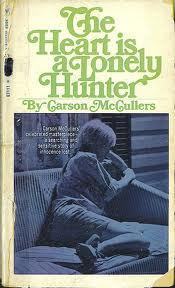 I tried to become strategic. If I liked Babbitt and O Pioneers the Lonely Hunter could not be far away, while ranking Heart of Darkness high would steer me away from my objective. Still, I rated every book I had read, and none less than three because, well, they were all good. Except for Confederacy of Dunces. I’m the sole person who hated that book. Couldn’t care less about a fat galoot romping through New Orleans.
I tried to become strategic. If I liked Babbitt and O Pioneers the Lonely Hunter could not be far away, while ranking Heart of Darkness high would steer me away from my objective. Still, I rated every book I had read, and none less than three because, well, they were all good. Except for Confederacy of Dunces. I’m the sole person who hated that book. Couldn’t care less about a fat galoot romping through New Orleans.
I started to slip away from anything close to my objective. I got mired in Dickens, Melville, Tolstoy. I despaired that Goodreads would ever suggest the favorite I was seeking. I scrolled through screen after screen headed in the wrong direction. Some pairings were humorous. Why was Diary of a Young Girl offered up next to Crime and Punishment?
By now Goodreads was getting fed up with me as well, offering titles a second time. No, I have never read Uncle Tom’s Cabin or East of Eden and I despised the implication I was illiterate as a result. Why was I offered Edith Wharton’s Age of Innocence over and over but never The House of Mirth? Why Victor Hugo’s Hunchback of Notre Dame but never Les Miserables?
I scrolled through all of the automatic pop-ups, and then hit continue for another round. When I reached the end of the second series without any opportunity to rate Carson McCullers, I stopped.
The takeaway? It’s more fun to let the computer take you where it wants to go than try to maneuver its ramblings. The impulse to read The Heart is a Lonely Hunter has to come from within.


August 18, 2014
Games of August III: My Path of Favorites
 I registered on Goodreads (www.goodreads.com). My intention was to set up an author page for my upcoming book, Architecture by Moonlight, but before I could do that I needed to have an account on the site. Inputting the usual data. Checking off my preferred genres. I like Classics, Contemporary, and Memoir more than Paranormal, Thrillers, or Romance.
I registered on Goodreads (www.goodreads.com). My intention was to set up an author page for my upcoming book, Architecture by Moonlight, but before I could do that I needed to have an account on the site. Inputting the usual data. Checking off my preferred genres. I like Classics, Contemporary, and Memoir more than Paranormal, Thrillers, or Romance.
The next screen showed five book covers: Pride and Prejudice, To Kill a Mockingbird, Star Wars, The Great Gatsby, and Jane Eyre. Four out of five seemed good match, and Star Wars is a Classic, though not as a book. Goodreads asked me to rate them. Really? Who am I to pass judgment on Jane Austen, Harper Lee, F. Scott Fitzgerald, and Charlotte Bronte? I posted five stars for the first three and a reluctant four for Jane Eyre. Giving everything five stars felt like grade inflation, and let’s face it, Jane Eyre is so depressing.
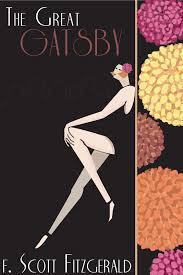 Another five book covers popped up – more like Pride and Prejudice. What did I think of Middlemarch? Violette? Then five more like The Great Gatsby. I got to rate Lolita, Franny and Zooey, and The Adventures of Huckleberry Finn. How those books were related to Gatsby was beyond me, but then the entire enterprise was foolish.
Another five book covers popped up – more like Pride and Prejudice. What did I think of Middlemarch? Violette? Then five more like The Great Gatsby. I got to rate Lolita, Franny and Zooey, and The Adventures of Huckleberry Finn. How those books were related to Gatsby was beyond me, but then the entire enterprise was foolish.
Yet addictive.
More like Lolita led me to Portnoy’s Complaint, then Appointment in Samarra, then The Berlin Stories. Goodreads had tapped right into my literary underbelly. I ranked Camus’ The Fall and thought the next screen might offer Marat/Sade when my favorites took off in a new direction.
More like To Kill a Mockingbird offered The Giving Tree, Holes, and A Tree Grows in Brooklyn. I loved them all. Particularly Holes. Any story where salvation turns on an affection for onions is a winner with me. Goodreads logic then inquired if I liked Goodnight Moon and Harold and the Purple Crayon. Of course, I adore Harold and the Purple Crayon. How many times did my toddler shelf wish that escaping my existence could be accomplished in a snug onesie with a single crayon. I like The Story of Ferdinand and Make Way for Ducklings as well.
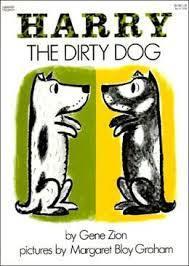 How about Harry the Dirty Dog? I love Harry the Dirty Dog. My children and I read it again and again. But wait a minute. This game began by contemplating the value of The Great Gatsby and it’s degenerated into assigning stars to a dirty dog. The comparison is beyond apples and oranges; even beyond onions. I gave Harry four stars. I don’t hold him in as high esteem as Jay Gatsby, but I put him on par with Jane Eyre.
How about Harry the Dirty Dog? I love Harry the Dirty Dog. My children and I read it again and again. But wait a minute. This game began by contemplating the value of The Great Gatsby and it’s degenerated into assigning stars to a dirty dog. The comparison is beyond apples and oranges; even beyond onions. I gave Harry four stars. I don’t hold him in as high esteem as Jay Gatsby, but I put him on par with Jane Eyre.
Internet connections make some sense, and a whole lot of nonsense. In less than five minutes I confronted over a hundred book cover images, ranked what I’d read, wondered about the rest, and ultimately spent as much time considering Harry the Dirty Dog as I did The Great Gatsby. In the process I elevated Harry and certainly diminished Mr. Gatsby.


August 11, 2014
Games of August II: Authentic Happiness
 I love taking surveys, personality tests and opinion polls. So when I discovered the website for authentic happiness, www.authentichappiness.sas.upenn.edu, I felt happy even before I dove into the site’s multiple questionnaires. There are nineteen in all, divided into categories that measure my emotions, engagement, life satisfaction, flourishing and meaning. The questionnaires measure how happy I am, and my results become part of the growing data base that informs University of Pennsylvania’s emerging work in Positive Psychology. So while I am measuring my own happiness, I am doing good, which made me happier. I anticipated scores rocketing off the charts.
I love taking surveys, personality tests and opinion polls. So when I discovered the website for authentic happiness, www.authentichappiness.sas.upenn.edu, I felt happy even before I dove into the site’s multiple questionnaires. There are nineteen in all, divided into categories that measure my emotions, engagement, life satisfaction, flourishing and meaning. The questionnaires measure how happy I am, and my results become part of the growing data base that informs University of Pennsylvania’s emerging work in Positive Psychology. So while I am measuring my own happiness, I am doing good, which made me happier. I anticipated scores rocketing off the charts.
Completing nineteen questionnaires in one sitting would be like gorging an entire chocolate cake or spooning a half gallon of ice cream straight from the carton – too much of a good thing. So I limited myself to the first category: Emotions. I inventoried my authentic happiness, determined my general happiness scale, and delved into academic sounding stuff like PANAS (positive and negative affect), CES-D (depression symptoms), and Fordyce Emotions (current happiness). My emotions verged on giddy at the prospect of such fun questionnaires.
So, how did I do? Is my happiness euphoric?
The results of the questionnaires landed me in a more realistic place: happy enough but hardly dizzy. I am overall 3.5 out of 5 happy, 7 out of 10 happy in the moment, 5 out of 7 over the long haul, with a 76% positive affect and 22% disposition toward depression. Turning happiness into hard data deflated me, but outlined a fair presentation of a generally happy person who grapples with depression for statically significant, though not overwhelming, periods of time.
What’s interesting is how I stack up against other people. Isn’t that the dirt we all want to know? Authentic Happiness reported my results in comparison to others my age, gender, and profession. Although I may be happy enough, I’m not so happy when compared with my peers. I tip the 50th percentile happy compared to other men and middle-aged people, but am less happy than the average retired person. It’s nice to know that people get happier when they retire. Since I am new at it, maybe the longer I’m retired the happier I will become. One must always strive.
The website also compared me with other computer users. Perhaps this is because I took the tests online. I scored much happier than most computer users. I don’t know how the correlation works. Does being on the computer makes people less happy or do less happy people spend more time on the computer? Either way, the takeaway of this game for me is: the key to happiness lies in being retired without spending too much time online.
Take the test yourself and see if you are as happy as you seem.


August 7, 2014
300 Breaths
 Hot Power Fusion (HPF) is the CorePower Yoga version of the Bikram series. The class contains the same 26 postures, though holds most only once whereas Bikram repeats. Instead, HPF adds a few sun salutations, flows, a balance inversion, and core work. It maintains 104-degree heat and 40% humidity, though it never feels as hot to me as Bikram does. Still, it is potent yoga.
Hot Power Fusion (HPF) is the CorePower Yoga version of the Bikram series. The class contains the same 26 postures, though holds most only once whereas Bikram repeats. Instead, HPF adds a few sun salutations, flows, a balance inversion, and core work. It maintains 104-degree heat and 40% humidity, though it never feels as hot to me as Bikram does. Still, it is potent yoga.
Bikram begins with a long series of pranyama breathing, which HPF omits. Pranyama is a great warm-up that stills and controls my breath, so I do it before class begins. The objective is to create even six-second inhales and even six-second exhales that establish a regular breathing pattern to continue throughout class.
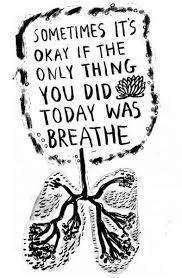 For me, the entire HPF sequence is one long flow with measured breath. A complete class of pranyama-paced breath includes 300 cycles of six-second inhale and exhales. I never achieve that. At some point in every class I lose my focus and my breath quickens, or I breathe faster to support my exertion. Oftentimes moments pass before I realize that my breath has strayed and I have to refocus my energy to align breath and movement again.
For me, the entire HPF sequence is one long flow with measured breath. A complete class of pranyama-paced breath includes 300 cycles of six-second inhale and exhales. I never achieve that. At some point in every class I lose my focus and my breath quickens, or I breathe faster to support my exertion. Oftentimes moments pass before I realize that my breath has strayed and I have to refocus my energy to align breath and movement again.
The HPF teachers can facilitate this seamless breath, but not all of them tech the class as one continuous flow. Some consider each pose or series distinct and take too-long breaks between them to maintain the balance of breath and movement. I am learning to simply continue at my own pace, sometimes moving ahead of their direction, other times lagging. Since I don’t want to disrupt students who follow the teacher more literally, I have taken to practicing in a corner of the hot room, which also helps my focus.
Perhaps the day will come when I complete a class in 300 even breath cycles. When that time comes, new ways of focusing my yoga will emerge to spur my practice. The journey of breath will not end with 300 perfectly executed cycles. It continues until all breath stops.


August 4, 2014
Games of August – Measure Your Brow
 August is hot and humid and not conducive to deep thought. Any thought, really. So, I’ve decided to find some simple games to play and share. Maybe they will shed some light on our place in the world. Probably not.
August is hot and humid and not conducive to deep thought. Any thought, really. So, I’ve decided to find some simple games to play and share. Maybe they will shed some light on our place in the world. Probably not.
The first game, Measure Your Brow, is inspired by the August 3, 2014 NY Times Article, “The Squeeze on the Middlebrow”. The article features Russell Lyons famous chart of 1949 that defines four intellectual classifications of Americans (high-brow, upper middle-brow, lower middle-brow, and low-brow) and describes them in terms of their creature comforts.
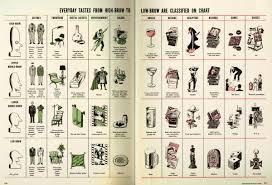 As a person born to the lower middle class who’s enjoyed many advantages and been tagged an intellectual by people who make me squirm, I wondered how Mr. Russell’s classifications applied to me. Here is how I fared:
As a person born to the lower middle class who’s enjoyed many advantages and been tagged an intellectual by people who make me squirm, I wondered how Mr. Russell’s classifications applied to me. Here is how I fared:
Clothes – High-brow. Eggheads don’t care about clothes and I only buy new when friends pick at my tatters in public.
Furniture – Low-brow. Half of the furnishings in my house came from the curb.
Useful Objects – Lower Middle-brow. My housemate and I don’t have his and her towels, but we are strict about having a matching set on designated racks.
Entertainment – Upper Middle-Brow. My love of theater transcends classification. I try to keep drama at proscenium distance.
Salads – Low-brow. Cole Slaw is my ultimate salad. But is it still low-brow if I replace the mayo with vinaigrette and enliven the cabbage with broccoli, cauliflower, kale, carrots, and sliced cherries?
Drinks – Low-brow. Beer. No other alcohol passes my lips.
Reading – Upper Middle-Brow. This is a no brainer. My main source of information is the NY Times. You can’t get any more Upper Middle-Brow than that.
Sculpture – N/A. I fall off the chart here. I have no sculpture. I want no sculpture. I am happy to relegate sculpture to public parks and museums.
Records – Lower Middle-Brow. I’ve been painting my bedroom this week and listened to Ragtime, Toby Keith, Garth Brooks, and Les Miserables in rotation.
Games – Lower- Middle-Brow. Bridge is my nearest match. But my real passion is Risk. Where is the category for Angry-Brow?
Causes – Upper-Middle-Brow. Pleas for social justice flap open my wallet.
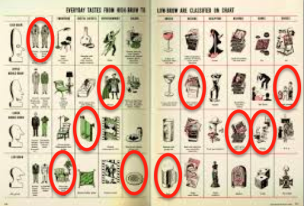 My results? Three each for Low-Brow, Lower Middle-brow and Upper Middle-brow. Only one High-brow, and for a slacker reason. Proof positive that a person can go to fancy colleges and claim a prize corner in scholarly Cambridge but never escape his roots. I simply like eating slaw and drinking beer at the table I hauled off the curb too much to raise my cultural classification.
My results? Three each for Low-Brow, Lower Middle-brow and Upper Middle-brow. Only one High-brow, and for a slacker reason. Proof positive that a person can go to fancy colleges and claim a prize corner in scholarly Cambridge but never escape his roots. I simply like eating slaw and drinking beer at the table I hauled off the curb too much to raise my cultural classification.
How prominent is your forehead in this game?


August 1, 2014
Getting Our Due – Attitude Makes all the Difference
 One of my tenants moved out. He gave notice in June and had paid rent through the end of July. I told him that if I rented the place before the end of the month I would refund him whatever partial month rent the new tenant paid. I did and sent him a check. He replied by email asking about the interest on his last month’s rent.
One of my tenants moved out. He gave notice in June and had paid rent through the end of July. I told him that if I rented the place before the end of the month I would refund him whatever partial month rent the new tenant paid. I did and sent him a check. He replied by email asking about the interest on his last month’s rent.
I’ve been a landlord of over thirty years and get legal guidance from a reputable source. I’ve never paid interest on last months rent, only on security deposits. When I explained this to the former tenant he sent me an email laced with legalese, quoting state law line and verse and the threat of filing a complaint with the Attorney General’s Office. It took me some time for the sting to subside from my neighbor of four years. We always had good relations and he’d been to my house socially. Did he think I was trying to stiff him $160?
I slept on the matter to cool my head and found out the next day that the law had changed. I was responsible to pay interest on last month’s rent paid in advance. I sent a check to my departed tenant, glad that he was gone. Then I figured what I owed my other two tenants in last month’s rent interest, sent them an email explaining the new requirement, and quantifying how much they could deduct from their next rent check.
One couple got a $180 credit. They sent me a thank you email with an exclamation point for their unexpected gain.
I owed my longest-term tenant over $600. He sent me a reduced rent check and an unexpected note. “I know that the law stipulates this, but it really feels like a great gift. How about if you provided me the name of a favorite charity of yours and I will donate an amount to it? I’ll also donate an amount to my favorite charity – just as an act of appreciation.”
The note made me realize that, although we many not be able to control the events of our lives, we have the power to control how we respond to them. I felt sorry for my departed tenant, who cast a shadow over years of good feeling by being confrontational. Yet so glad for my remaining tenant, who chose to view his right as a gift he could share with others.







